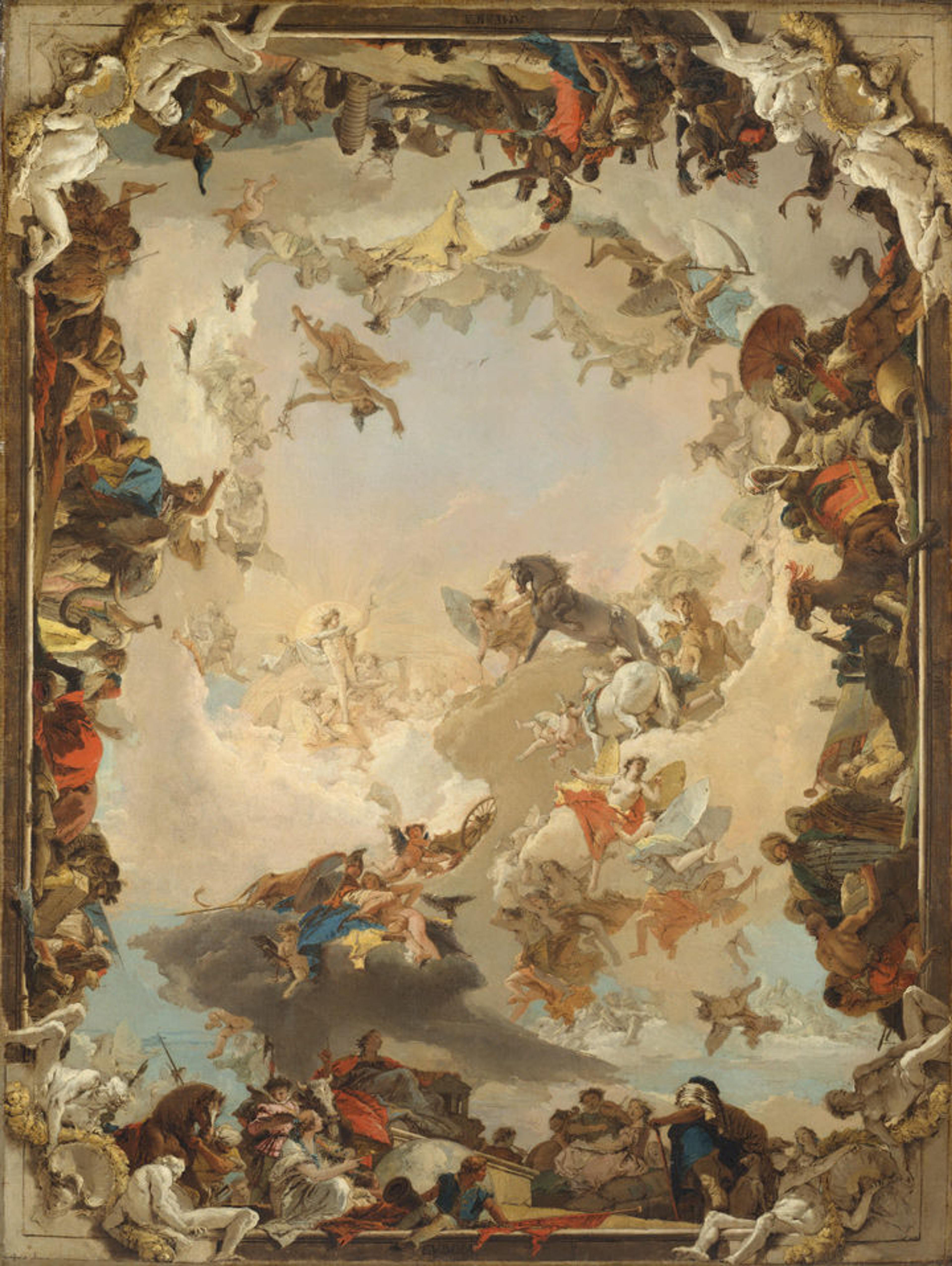
Giovanni Battista Tiepolo (Italian, 1696–1770). Allegory of the Planets and Continents, 1752. Oil on canvas; 73 x 54 7/8 in. (185.4 x 139.4 cm). The Metropolitan Museum of Art, New York, Gift of Mr. and Mrs. Charles Wrightsman, 1977 (1977.1.3)
«Ever since I was a child, I've had a great interest in movies and filmmaking. I've always been curious about how certain scenes evoke a particular mood or feeling in the audience and about what messages, inspirations, and mindsets the audience leaves with after viewing a film. I've wanted to grasp the small and big details that inspire these emotions.»
In exploring this idea, I've realized that one important factor is the music. It wouldn't make sense to play hardcore rock music in the background of a scene in which a young boy holds the hand of his mother, who is dying of cancer, on a hospital bed. However, it would make sense to play inspirational, fast-paced strings and trumpets in the background of a scene that features a track and field athlete training for the summer Olympics. This concept of matching music to specific scenes or photographs is one of the reasons why I was inspired to begin playing the piano.
During my high school internship at the Museum, I was surrounded by "still" scenes, or, as we know them, photographs, paintings, and sculptures. As I walked around, I would try and match specific melodies to works of art. The best connection I've made is between Giovanni Battista Tiepolo's Allegory of the Planets and Continents and one of my favorite songs, Muse's "Bliss."
To me, Allegory of the Planets and Continents has a "grand" feel. There are so many things happening around the edges of the painting, but everything is focused on the one figure in the middle of the painting: Apollo, the god of music according to Roman mythology. In "Bliss," a riff is played in a minor key during the verses, which brings to mind all of the figures around the edges of Allegory. The chorus of the song, which is played in a major key, does the same for the scene of Apollo in the middle of the painting. I believe that the feelings this painting evokes are the same as those expressed in the song.
In the Museum's galleries, I'm always drawn first to the emotions paintings and sculptures convey, and then to the history or factual information behind the image. I think that whatever feelings I sense from the image may be the same ones the original artist had when creating it, and that makes me feel like I've formed a personal connection with someone I've never met. I love getting lost in the Museum for the same reasons. Not only is it fun to do, but it also always puts my imagination on a sort of treadmill. I wander around the Museum and hear various types of songs in my head.
Editors' Note: Sam and all of the summer 2016 high school interns worked with visiting artist Curtis "Talwst" Santiago to transform ring boxes into works of art that express something about their identities. Sam's art, like this post, explores his interest in the power of music. Explore photos and explanations of these works by the interns on our Teen Facebook page.